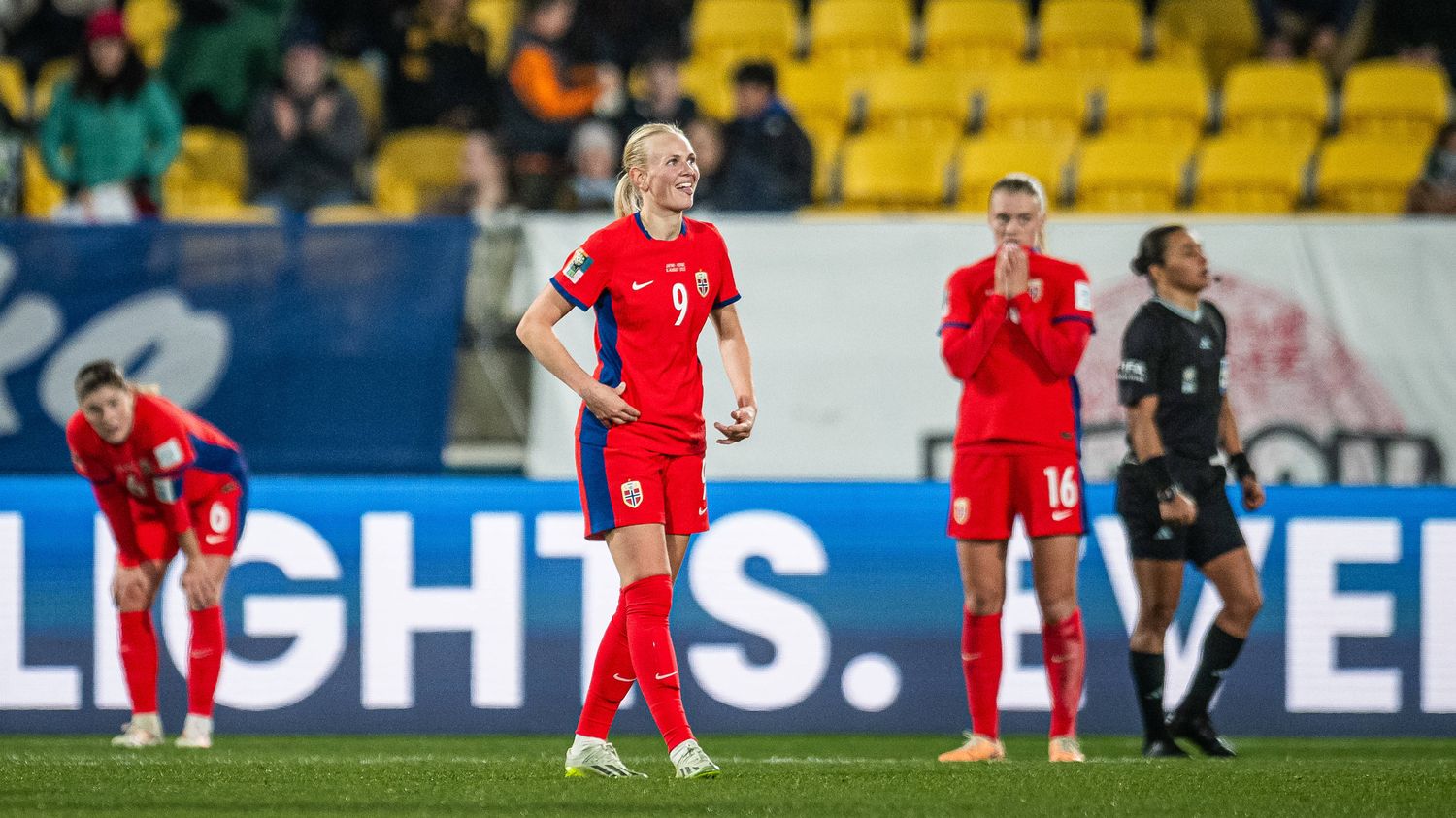World champion in 1995 and gold medalist at the Sydney Olympic Games in 2000, Norway, which challenges France on Friday in Oslo, has been experiencing darker times for a decade despite a talented squad.
If the polar cold can freeze sediments for several tens of thousands of years, Norway has, despite its climate, been unable to preserve what made it successful in the 1990s and 2000s. In a bad situation, the now 13th nation in the world hosts the Blues, Friday October 27 in Oslo, on behalf of a League of Nations which it started very badly with a draw against Austria (1-1) and a defeat in Portugal (2 -3). A performance far from the standards of a country that won the second Women’s Football World Cup in history in 1995 and the 2000 Olympic Games in Sydney, but which demonstrates its decline.
“In Norway, equality between women and men in obtaining rights has always been a major concern and as such, the successes of the women’s team are always a source of great pride for the country. Now, the time is rather frustration”, slips Jonas Adnan Giaever, Norwegian sports journalist. For ten years now, the Scandinavians have been chasing a podium in a major competition. During the last World Cup, the team exited in the round of 16 against Japan (1-3), after having struggled to assume its status as favorite in a more than affordable group. Not enough to wash away the insult of an elimination in the first round of the Euro a year earlier with, as a bonus, an 8-0 humiliation against England.
A missed professional turn
Even today, Norway counts some of the best players on the planet in its ranks. In addition to Lyonnaise Ada Hegerberg, crowned Golden Ball in 2018, Caroline Graham Hansen continues to win titles at Barcelona, while Guro Reiten shines at Chelsea. Diminished, the three headliners will be absent against France, but the list of Norwegians playing in the best teams on the continent remains long. “It’s not about talent, it’s about attitude. Not everyone seems to be pulling in the same directionanalyzes the journalist. We pay for the fact that most players play all year round in the best clubs, where working conditions and professionalism are light years away from what is done in the selection.”

“When I played at Liverpool, there was a big difference in terms of infrastructure and personnelconfirms Ingrid Ryland, international from 2010 to 2018 (25 caps). We didn’t have a physical trainer in the national team and there were gaps, particularly in the medical knowledge of the staff.” If the situation has evolved somewhat, the former full-back who became a consultant for the Norwegian channel TV2 finds it difficult to rejoice at the announcement of the construction of a training center dedicated to the different selections. “Certainly, the Norwegian federation plans to deliver high quality equipment within four or five years, but we should have had it ten years ago”she regrets, while the players have until now been forced to travel constantly to prepare for matches.
For a decade, and more recently, the level of international women’s football has been tightening, as the last World Cup once again demonstrated. Combined with late investments, this factor has led to a gradual downgrading of Norway, which has only 5.4 million inhabitants. “If we compare to other nations, we have poorer academies and it is therefore more difficult to maintain high standards for our local championship. As a result, we now find it difficult to compete with countries like New Zealand, Austria or Portugal”explains Ingrid Ryland.
A project rebuilt from scratch
Several circumstances have been added to these structural problems. Without results to show at Euro 2022 despite the return of Ada Hegerberg – who had refused selection for issues of equal treatment between women and men since 2017 – Swedish coach Martin Sjögren was sacked and replaced by Hege Riise , one of the greatest Norwegian glories. If qualification for the World Cup was assured, the Nordics’ inability to apply their game quickly posed a problem.

“There is no clear identity in the game. In the 1990s, we played long balls and it worked. But with the development of modern football and given the talent we have, Norway should surely to be much more dominant. We need solid collective foundations and an established starting eleven.”judge Ingrid Ryland, while questions of hierarchy created turmoil this summer, as Jonas Adnan Giaever recalls.
“During the World Cup, we realized that there were a lot of egos in this team.”
Jonas Adnan Giaever, Norwegian sports journalistat franceinfo: sport
Starting with attack leader Caroline Graham Hansen, who returned before the tournament from a one-year break away from the selection to preserve her body and health. Not starting against Switzerland, she criticized the choice of her coach to the press, declaring that she had the impression “for being trampled”before apologizing a few days later.
For Leif Gunnar Smerud, an interim coach recruited from the Norwegian U21s after the resignation of Hege Riise, the objective is now to rebuild “an environment conducive to trust”. Norway has only three victories in its 14 matches played over the past twelve months (including a draw and a defeat against France). Failing to aim for Olympic qualification via the Final Four which now seems inaccessible, this already involves a fight to avoid relegation to division B at the end of this League of Nations, and therefore by a positive result against the Blue.
